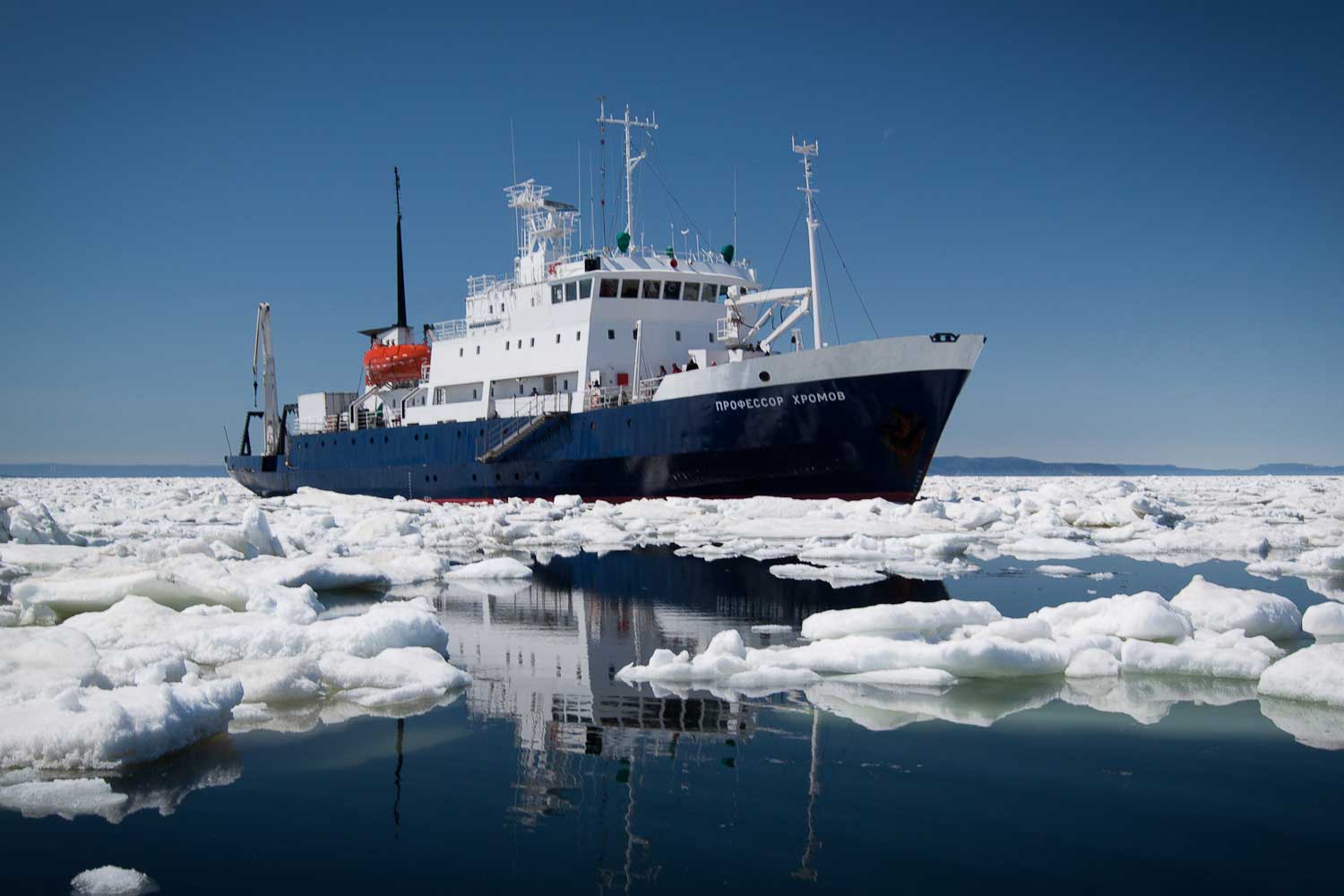Shokalskiy Breaks Free from Antarctic Ice
After more than two weeks stuck fast, the M/V Akademik Shokalskiy has managed to break free from the Antarctic pack ice and is heading north into open water.
After more than two weeks stuck fast, the M/V Akademik Shokalskiy has managed to break free from the Antarctic pack ice and is heading north into open water. The Chinese icebreaker Snow Dragon which had also been trapped trying to assist Shokalskiy has also now broken free. Changes in wind from easterly to south-westerly helped to loosen the pressure on the pack ice and opened the way for a passage free. This had been predicted by many however came too late to avoid the descision to airlift the passengers to the Australian icebreaker Aurora Australis
The Australian Maritime Safety Authority confirmed that the Akademik Shokalskiy and the Xue Long are no longer in need of assistance. The US Coast Guard icebreaker Polar Star which was heading south to assist will now continue on its original mission to McMurdo Sound in the Ross Sea.
Yesterday evening Australian time, rescue authorities received a message from the Captain of the Akademik Shokalskiy stating that cracks had started to open in the ice around the trapped vessel. The Akademik Shokalskiy was able to make slow progress and break free from surrounding ice. After a few hours they had managed to successfully clear the heaviest ice and progress north through lighter ice conditions. By this morning Akademik Shokalskiy had cleared the ice field altogether and was no longer in need of assistance. The Captain of the Akademik Shokalskiy passed on his thanks to all those who assisted the vessel and informed that they will now proceed to Bluff in New Zealand.
The Captain of the Chinese icebreaker Snow Dragon (Xue Long) informed that, by yesterday about 9pm AEDT, it too had managed to break free of the heavy ice and is now making slow progress through lighter ice conditions to continue its research mission in Antarctica.
Defending criticism that the expedition was not prepared for the risks involved, leader Professor Chris Turney says the expedition was not just a "jolly tourist trip" but represented serious science, which had two years of planning behind it and achieved much before it became stuck.
"During the expedition we pioneered a new route into the huts and were able to deliver two large teams to work in the area, including undertaking important conservation work on the huts," he wrote. "The AAE is inspired by Mawson but is primarily a science expedition; it will be judged by its peer-reviewed publications."
Professor Turney said the passengers were grateful for their rescue but said the circumstances which saw their ship lodged in ice were unforeseeable. "Unfortunately, events unfolded which no amount of preparation can mitigate," he said. "Unluckily for us, there appears to have been a mass breakout of thick, multi-year sea ice on the other side of the Mertz Glacier; years after the loss of the Mertz Glacier tongue. "There was nothing to suggest this event was imminent. We have had regular updates on the state of the sea ice in the area and had been monitoring the region for the last year."
Stewart Campbell from Expeditions Online said, 'People contemplating a trip to Antarctica should certainly not be put off - the vast majority of cruises to Antarctica explore the Antarctic Peninsula area which has far lighter or zero sea ice coverage during the summer. Risks of being trapped in ice such as this are really very minimal.'
Stewart was was onboard a tourist voyage on the icebreaker Kapitan Khlebnikov some 18 years ago which had assisted the French vessel Astrolabe (one of the three ships which recently came to the assistance of Shokalskiy) out of a similar situation. He added 'it is certainly not only privately-organised ships which need assistance from time to time! At sea, especially in Antarctica, ships are always prepared and willing to help one another.'
The 'Spirit of Mawson' AAE expedition on Shokalskiy was a one-off expedition with an unique combination of tourists travelling with and supporting the scientific expedition. It is not known if the itinerary will be repeated in the future.
The Akademik Shokalskiy is a fully ice-strengthened expedition vessel built in 1984 for polar and oceanographic research. This class of vessel is world renowned for polar exploration, because of its strength, maneuverability and small passenger numbers. She has two identical sister vessels which are also active in polar tourist expeditions: The Spirit of Enderby, which sails on expeditions to the Ross Sea and Russian Arctic; and the Polar Pioneer, which sails frequently to the Antarctic Peninsula and Svalbard and Greenland.

Expeditions Online Newsletter
Sign up to be an Expeditions Online insider and receive info on exclusive deals, discounts and more!